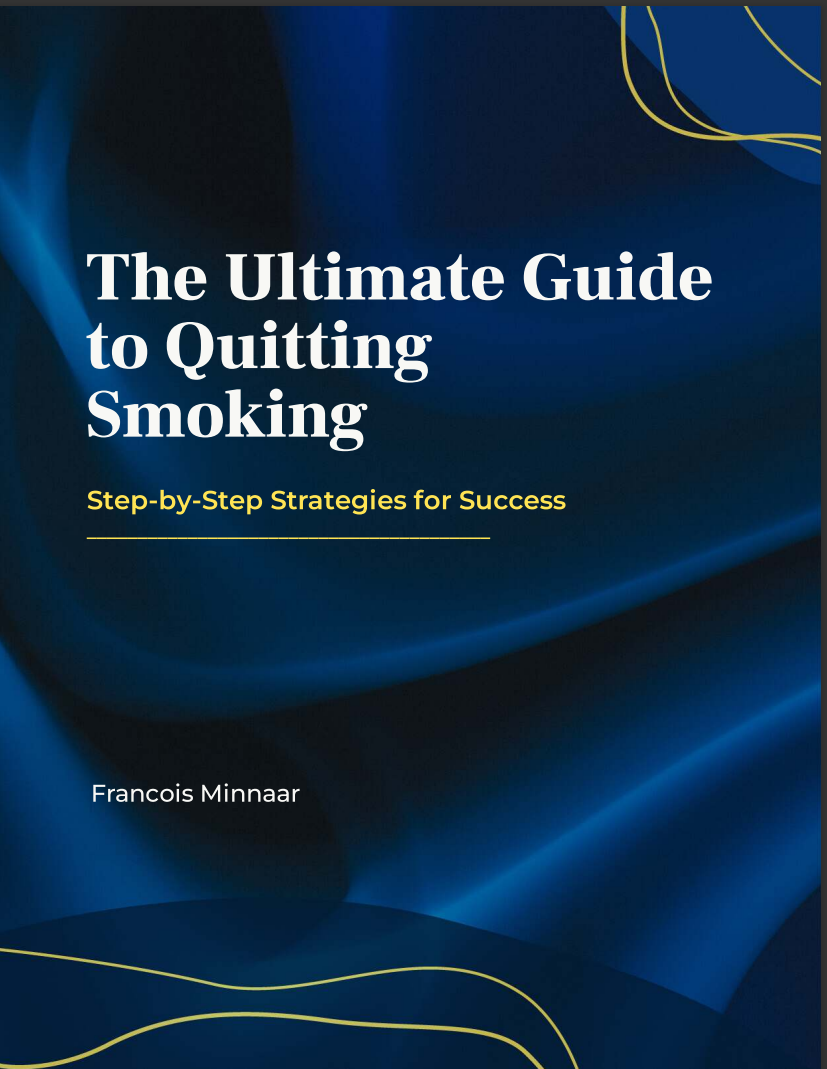Your Quit Smoking Plan! Take Control of Your Journey Today
Personalized Quit Smoking Plan- Reference: Prepare to Quit Smoking: Your QSRS Step-by-Step Course to a Smoke Free Life." for more detail.
1. Set a Quit Date
Choose a Specific Date: Select a date within the next two weeks to quit smoking. Mark it on your calendar and prepare mentally.
2. Identify Your Triggers
Keep a Trigger Journal: For one week, write down when you smoke and what situations, emotions, or activities lead to your cravings.
Recognize Patterns: Identify common triggers (stress, social situations, after meals) so you can develop coping strategies.
Recognize the Keys
Tip: Notice when and where you smoke the most. These are your triggers—your morning coffee, after a meal, during stress, or with friends. Acknowledge them as opportunities to change.
3. Develop Coping Strategies
For Stress and Anxiety:
Deep Breathing Exercises: Practice inhaling for four counts, holding for four counts, and exhaling for four counts.
Mindfulness Meditation: Spend 5-10 minutes daily focusing on your breath or using guided meditation apps.
For Cravings:
Delay Technique: When a craving hits, wait for 10 minutes before reaching for a cigarette. Use this time to engage in an alternative activity.
Healthy Substitutes: Keep healthy snacks like carrot sticks, nuts, or sugar-free gum on hand to manage cravings.
For Social Situations:
Plan Ahead: Decide how you will handle situations where you would normally smoke (e.g., excuse yourself, use a stress ball, or drink water).
Communicate Your Goals: Inform friends and family about your quit date and ask for their support.
Pick Up the Keys
Tip: Replace your smoking habits with healthier or neutral alternatives. For example, drink a glass of water, chew gum, or take deep breaths instead of reaching for a cigarette.
4. Create a Support System
Join a Support Group: Seek out local or online quit smoking groups where you can share experiences and get encouragement.
Find a Quit Buddy: Pair up with someone who supports your journey, whether they are quitting too or just want to help you succeed.
5. Use Replacement Techniques
Nicotine Replacement Therapy (NRT): Consider using patches, gum, or lozenges to manage withdrawal symptoms if necessary.
Distraction Techniques: When you feel the urge to smoke, engage in a hobby or activity you enjoy, such as reading, drawing, or walking.
6. Focus on Positive Reinforcement
Set Short-Term Goals: Celebrate milestones, such as one day, one week, or one month smoke-free. Treat yourself with a small reward (like a movie night or new book).
Visual Reminders: Create a visual board with motivational quotes and images that remind you why you want to quit.
Unlock the Chain
Tip: Shift your mindset. Remind yourself that quitting isn’t about losing something—it’s about gaining control and freedom over your life.
7. Address Emotional Challenges
Journaling: Write down your thoughts and feelings throughout the quitting process. Reflect on your successes and struggles to better understand your emotions.
Practice Self-Compassion: Remind yourself that setbacks can happen, and it’s okay. Focus on progress rather than perfection.
8. Prepare for Relapse
Develop a Plan: Create a strategy for what you will do if you find yourself smoking again. This might include reaching out to your support system or revisiting your coping strategies.
Learn from Setbacks: Analyze what led to the relapse and identify steps to prevent it in the future.
9. Maintain Your Smoke-Free Life
Stay Engaged: Continue participating in support groups and engaging with resources that encourage your smoke-free lifestyle.
Regularly Revisit Your Goals: Keep your reasons for quitting at the forefront of your mind. Reassess and adjust your strategies as needed.
. Throw the Chain Away
Tip: Celebrate every smoke-free moment. Whether it’s resisting a cigarette at your usual spot or going a full day without smoking, each victory matters.
Conclusion
This plan serves as a flexible guide to help you navigate the mental and habitual challenges of quitting smoking. Remember, the journey is personal, and it’s essential to adapt these strategies to fit your unique situation. Stay committed, be patient with yourself, and celebrate every small victory along the way!
Thanks for engaging with our quit plan template! If you’re ready to take the next step, try our free quiz to discover the stage you’re in and get tailored advice to help you quit smoking successfully. Remember, this is your journey—you’re in control every step of the way. We’re here to support you with helpful resources and information, not to monitor or track your progress. And best of all, it’s completely free!
